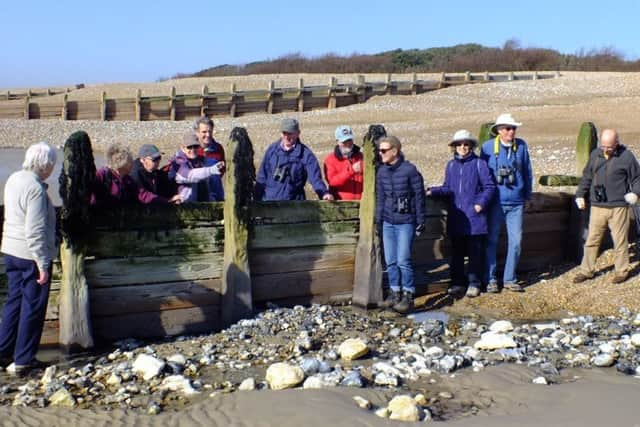Chestnut Tree House benefits from hundreds raised by conservation group
and live on Freeview channel 276
Artist Tricia Hall from the group raised £560 for the hospice by selling Christmas cards she had painted, depicting beach huts in the snow.
Many of the cards were also sold by Margaret Metcalf at St. Andrew’s Church after Sunday services, and the final amount was presented to the hospice by Tricia and chairman David Bettiss.
Advertisement
Hide AdAdvertisement
Hide AdMembers also enjoyed a walk from Sea Lane in Ferring to Goring, spotting a merlin as well as a mini habitat of limpets, barnacles, mussels and periwinkles.


The group searched under rocks and collected a variety of organisms stranded on the beach, including ray and shark egg cases, cuttlefish ‘bones’, slipper limpets and other mollusc shells and the colonial animal hornwrack which looks like a dried seaweed.
On the return trip, the sea was coming in and so the group was able to observe oystercatchers, dunlin and sanderling on the tide line and turnstones camouflaged against the rocks.
Nine members of the group have been keeping on top of conservation work on the village green on the first Tuesday of each month, with the latest session involving trimming and cutting back shrubs.
Advertisement
Hide AdAdvertisement
Hide AdAs a contribution to St. Andrew’s Church’s 1,250th anniversary, the group has constructed a herb bed based on a cartwheel design on the village green.


The bed is for fun but members hope to provide informative labels and the herbs have been selected for their attractiveness to bees and other insects.
Specimens include medicinal herbs, dyeing plants, strewing plants and culinary herbs, and the group is encouraging people to go along and see what has been planted.
-----